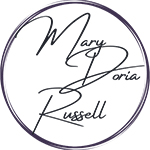When I was writing Doc, I believed it would be a stand-alone historical novel like A Thread of Grace or Dreamers of the Day. I thought the story of the gunfight at the O.K. Corral was so well known, so much a part of American folklore, that there was no point in going back over that ground. What struck me as new and fascinating was the story of John Henry Holliday’s life: his cleft palate, his uncle’s pioneering surgical correction of that birth defect, his mother’s devotion, his musical and professional education, and the courage with which he endured a devastating illness that blighted his entire adult life and ended it when he was just 36.
So I barely mention the gunfight that would make Wyatt Earp and Doc Holliday famous. I focused on Dr. J. H. Holliday’s time in Dodge City, Kansas. I wrote about 1878 — the year that Doc met Kate Haroney and the Earp brothers, and the last year he was well enough to hang out a shingle and establish a full dental practice. The gunfight in 1881 was just over the horizon, but I wanted to write about these young men and women when they were just getting started, when none of them wanted fame or deserved notoriety.
And frankly, I just didn’t think I could do better than the wonderful Kevin Jarre screenplay “Tombstone.”
There have been over 30 feature films about the gunfight at the O.K. Corral, starting at the dawn of the film industry. In my opinion, “Tombstone” is the best by far and Val Kilmer’s portrayal of Doc Holliday is the closest on film to the reality of man. Throughout Doc, there are echoes of the terrific dialog in that movie, as well as a few moments that nod to Kevin Costner’s film “Wyatt Earp,” which I think is less successful as a drama, but which I admire for its recognition that James and Bessie Earp existed.
After spending three years living with these characters night and day, I realized that I had developed a very different interpretation of what happened in Tombstone on October 26, 1881 — not about the mechanics of the gunfight but about the men themselves, about events that led up to that confrontation, and about its aftermath. And I hope to bring a fresh portrayal of Ike Clanton, Johnny Ringo, Curly Bill Brocius and especially of the McLaury brothers to the canon.
The working title is The Cure For Anger. If Doc is The Odyssey, then this will be The Iliad: a story of ruinous wrath — the kind of anger that cannot end until someone is in the grave.
The manuscript is presently at about 92,000 words; for scale, Doc was about 146,000 words total. So: a little more than half done. I anticipate it will be out in late 2014, which I sincerely hope will be just in time to benefit from HBO’s publicity for Ron Howard and Akiva Goldsman’s series based on Doc.
Speaking of which: all the signatures are on all the dotted lines, but everyone involved has a bunch of projects already lined up for 2013 and beyond. It takes a while for a new project to work its way up to the top of the pile.
For previous blogs about the HBO series, click here.
Read from the bottom up!
